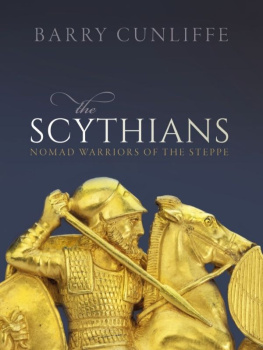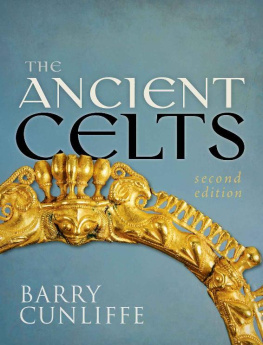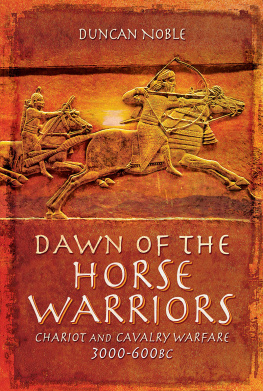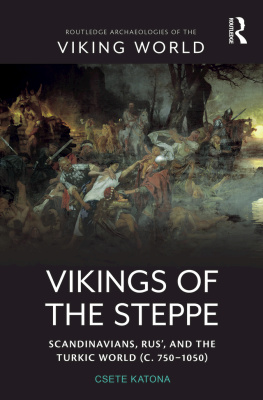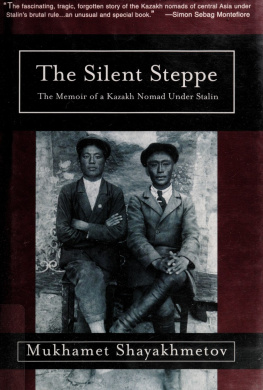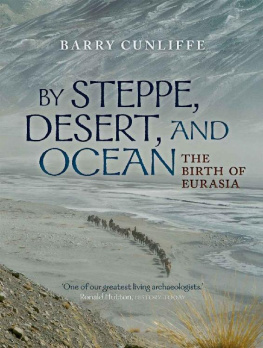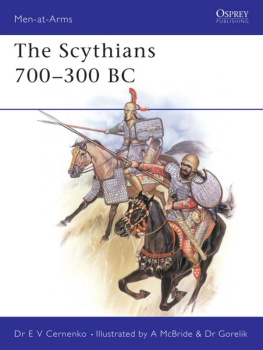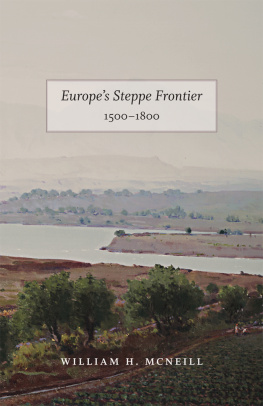THE SCYTHIANS
THE SCYTHIANS
NOMAD WARRIORS OF THE STEPPE

BARRY CUNLIFFE


Great Clarendon Street, Oxford, OX2 6DP United Kingdom
Oxford University Press is a department of the University of Oxford. It furthers the Universitys objective of excellence in research, scholarship, and education by publishing worldwide. Oxford is a registered trade mark of Oxford University Press in the UK and in certain other countries
Barry Cunliffe 2019
The moral rights of the author have been asserted
First Edition published in 2019
Impression: 1
All rights reserved. No part of this publication may be reproduced, stored in a retrieval system, or transmitted, in any form or by any means, without the prior permission in writing of Oxford University Press, or as expressly permitted by law, by licence or under terms agreed with the appropriate reprographics rights organization. Enquiries concerning reproduction outside the scope of the above should be sent to the Rights Department, Oxford University Press, at the address above
You must not circulate this book in any other form and you must impose the same condition on any acquirer
Published in the United States of America by Oxford University Press 198 Madison Avenue, New York, NY 10016, United States of America
British Library Cataloguing in Publication Data
Data available
Library of Congress Control Number: 2018967284
ISBN 9780198820123
ebook ISBN 9780192551870
Typeset by Sparkswww.sparkspublishing.com
Printed in Great Britain by Bell & Bain Ltd., Glasgow
Links to third party websites are provided by Oxford in good faith and for information only. Oxford disclaims any responsibility for the materials contained in any third party website referenced in this work.
PREFACE
MANY years ago as a young undergraduate at Cambridge I came across a brief reference, in a series of essays written by Gordon Childe, to horsemen who had moved westwards from the Pontic steppe and had established themselves in Hungary at the end of the Bronze Age. I was surprised to find that none of my teachers at Cambridge had any interest in, or indeed much knowledge of, the subject so I decided to follow it up, as far as I could, from published sources and to make it my own. That which we discover for ourselves we cherish. So began a lifelong fascination with the warrior nomads of the steppe.
Some years later, in the early 1970s, I managed to arrange a brief study trip to Hungary, then still under Soviet control, the first of many visits to Eastern Europe to meet colleagues and to establish academic links. It was in the National Museum in Budapest, looking in awe at two great gold stags, brought to northern Hungary by horsemen from the steppe, that the brilliance and energy of the Scythian world first really struck home. Thereafter I have dogged the footsteps of the Scythians, in the Ukraine and the Crimea, and across Central Asia as far as Mongolia. I have also made pilgrimages to two of the worlds greatest collections of Scythian art, in the State Hermitage Museum in St Petersburg and the Museum of Historical Treasures in Kiev. This book is my homage to these remarkable people.
For the most part the story told here is presented as a straightforward narrative but a small collection of end matter has been added: a list of Scythian kings, a brief timeline, and a Gallery of Objects in which ten selected items, which best illustrate Scythian life, are presentedchosen because they are frequently referred to in the text. There is also a section offering a Guide to Further Reading for those who, I hope, might wish to begin to dig deeper into the detail.
To an educated Greek, the Scythians were one of the four great peoples of the barbarian world. They were well known. Scythian archers were frequently depicted on Attic Black-Figured pottery and historians like Herodotus recorded stories from their history exploring, with undisguised delight, their unusual behaviour and beliefs. Nowadays Scythians are seldom in our consciousness. They are hardly represented in our museum collections and only rarely are they the subject of temporary exhibitions. Recently, in 2017, the British Museum has hosted a brilliant exhibition, Scythian Warriors of Ancient Siberia, from the State Hermitage Museum, St Petersburg. Before that one has to go back to the Frozen Tombs exhibition of 1978. America has been rather better served but even so the wonders of Scythian culture are seldom seen in the West.
There are many reasons for this. The difficulty and expense of mounting international displays must rank large. But there are also cultural reasons. The Scythians were largely nomads, constantly on the move and frequently covering large distances. They left no cities or monumental architecture. For most people in the world today, leading sedentary, urban lives, nomadism is difficult to comprehend; it is much easier to empathize with Greeks and Romans, or even Egyptians or Aztecs. The Scythians are other, alien and therefore a little unnervingbest left on the margin where they belong. Yet to the Greeks it was just this that made them so fascinating. And rightly so. I hope that this book will go some way in making the world of the Scythian nomads a little more accessible and understandable and will encourage at least some readers to explore for themselves the wonders of Scythian culture and the breathtaking steppe landscape in which they lived.
Barry Cunliffe
Oxford
April 2018
CONTENTS
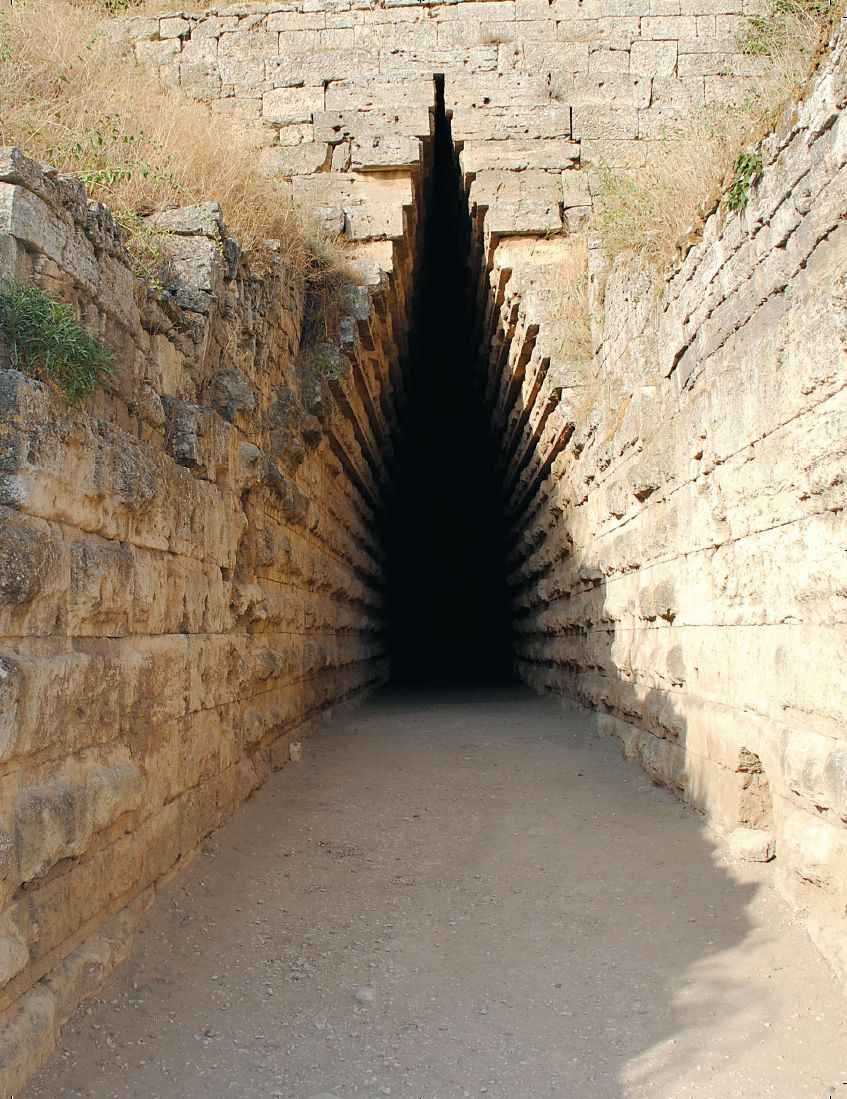
IN April 1698 a tall young man, 26 years old, untidily dressed and with hands scratched and scarred through hard work, decided to take time off from studying shipbuilding in the Deptford and Greenwich yards on the Thames to visit Oxford with a small group of friends. The party stayed in the Golden Cross Inn in Cornmarket, where they evidently had a convivial evening, and the next morning set out to visit the Ashmolean Museum, then in Broad Street. The museum had been opened fifteen years earlier, under the patronage of Elias Ashmole, to house his cabinet of curiosities inherited from the collector John Tradescant. The visit to the museum was brief but the group had attracted notice and by the time they left to cross the road to visit Trinity College chapel a large crowd had gathered. Irritated by the attention the young man decided to return to London to immerse himself once more in the intricacies of shipbuilding. He was Peter Alexeyevich, Tzar of Russia, later to be known as Peter the Great.
Peter was an intellectual and a man of action. He had realized that for his country to grow in the modern world it would have to become a great sea power. Since its few ports on the icebound White Sea were far from adequate he set his heart on establishing a navy on the Black Seaan ambition which meant confronting the Ottomans, who then controlled the region. Later in his reign he was to turn his attention to the Baltic and the Caspian Sea, involving Russia in wars with Sweden and Persia. It was his early realization of the importance of sea power that led him to take a deep interest in shipbuilding. In 1697 he travelled incognito to western Europe with a small delegation, known as the Grand Embassy, to learn about the West and to establish new alliances. His interest in maritime technology led him to spend time in Amsterdam in the shipyards of the Dutch East India Company, as well as in the London dockyards. Later he visited Malta to study the Knights of St John and their fleet, and even considered the possibility of setting up a Russian naval base on the island.

